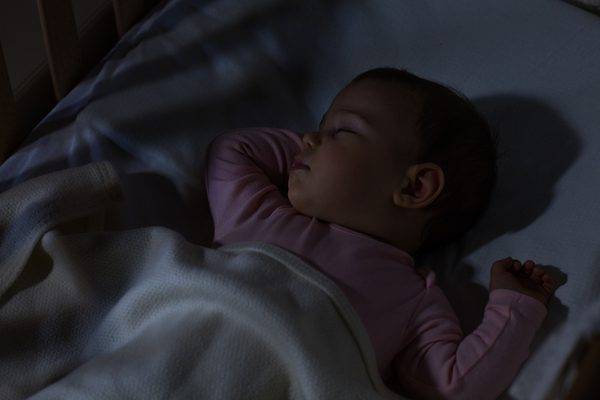4 Tips for Creating a Sleep Friendly Nursery

Finding ways to maximize your baby’s sleep is probably something you spend a lot of time on. In this guide, I will discuss sleep-friendly elements you can incorporate in the nursery to encourage sweet dreams.
Creating a Nursery that Will Help Your Baby Sleep
Keep the Nursery Simple
Pinterest has the dreamiest nurseries, decked out with whimsical canopies and artwork. While these are all so beautiful, these nurseries can distract from sleep. When decorating focus on the wall artwork for design instead of toys, and over the crib décor which may become sleep distractions as they become more aware.
For example, having a mobile above your baby’s crib promotes visual stimulation, especially as babies still have the novelty of their new senses. Keeping the sleep space for sleeping and the play space in a separate area is best.
This develops clear and direct associations that help your child acknowledge when it is time for sleep and time for play. You might now be thinking, “what is the alternative to the beautiful mobile you got for your baby shower?” Instead of installing it over the crib, put it over the changing table. In the end, simple is best!
Keep the Nursery Dark
Another essential to a sleep-friendly nursery is pure darkness. You might be tempted to keep a cute nightlight in the nursery as comfort for your child, but it is not necessary. Fearing the dark is learned and does not develop until toddlerhood.
Light at this age can interrupt your child’s sleep between sleep cycles and impact melatonin production, also known as the sleepy hormone. Our bodies are biologically created to respond to light and darkness. In response to night, our brain produces melatonin, increasing our ability to sleep. When light is introduced, whether natural or artificial, melatonin production will halt!
If you want the best sleep-inducing lighting, use blackout curtains and remove the night light so the room can be so dark that you cannot see your hand in front of you. Remember, the womb was very dark, so it only recreates what they feel the most comfortable!
If you need light in your room for feedings or middle-of-the-night changings, use a red, orange, or yellow light. Many theories suggest that red light can also stimulate melatonin production or, at the least, does not affect the circadian clock!
Keep the Temperature a Cool 68-72 degrees
The optimal temperature for sleep is 68-72 degrees. While this temperature might sound very cold, not only does this promote the best sleep, but it also avoids the risk of overheating. Keeping the room cool in one study in 2012 suggests it was one of the most important factors to good sleep!
To see if your child is comfortable check their core (back of the neck and back). Baby hands and feet are often cold, so do not use them for temperature guidance.
Use Brown Noise in the Nursery
The last essential is utilizing a noise machine. You may have heard the wives’ tale to teach your child to sleep in an open room with lights and noise so they can learn to sleep in whatever environment there is. However, children are either hardwired to be sensitive to noise or not.
Most children, at some point, will biologically respond to noise as a survival instinct. Therefore, it is highly recommended to use a noise machine, not just any sound machine, a brown noise machine. While you may have heard of a white noise machine, a brown noise machine utilizes low-frequency sounds, such as a dryer or the womb. In addition, some white sound machines have other noises like rain or lullabies; both can be uncomfortable to hear and distract during sleep.
And just like their first cozy room that was so sleep-inducing (the womb), these noise machines should be continuous and able to stay on for their sleep. Place the machine approximately 5 feet away from your child’s bassinet or crib at about 60 decibels, and it will feel like “home, sweet home” to your baby.
TIP: Many free phone apps can help you measure decibels!